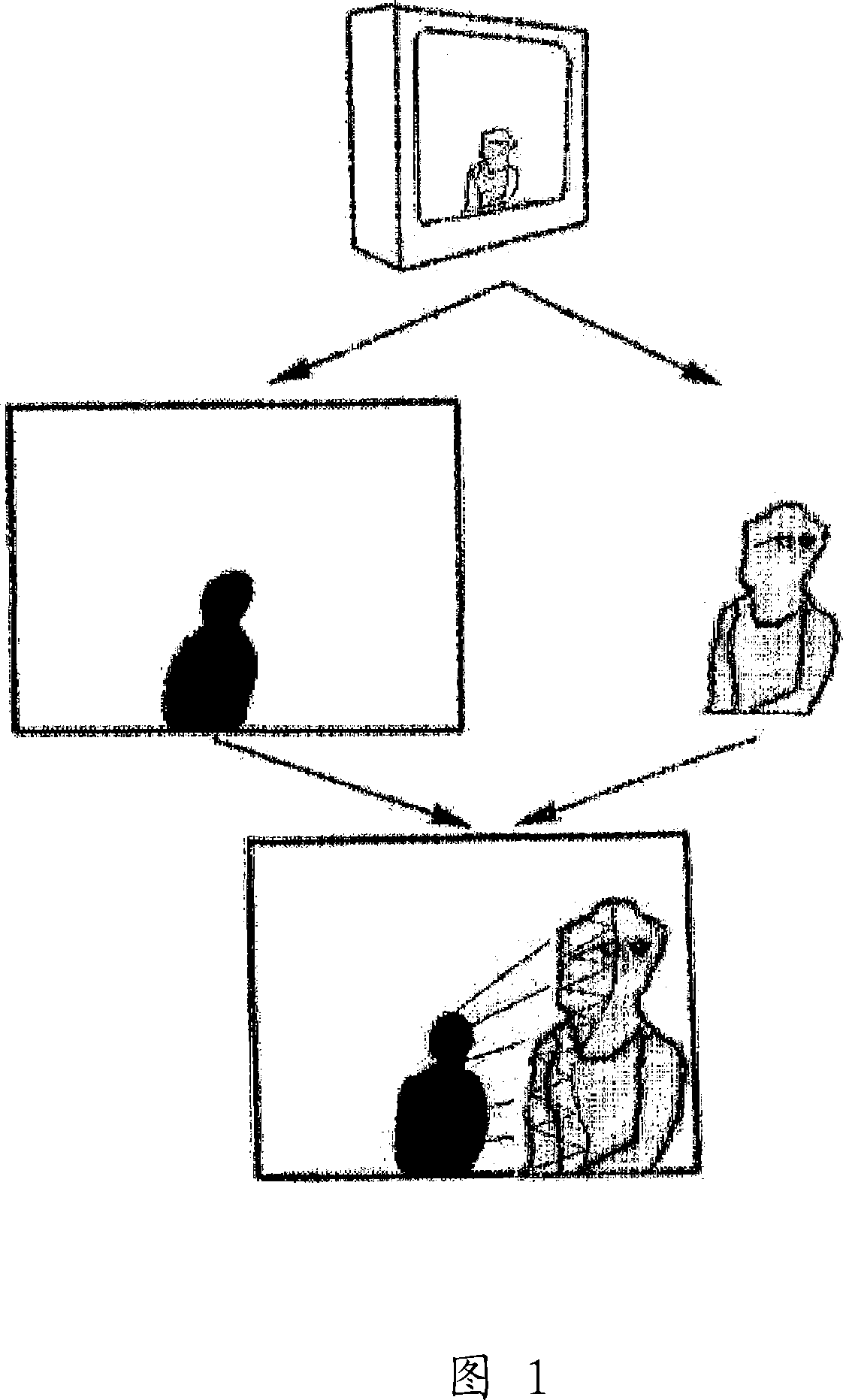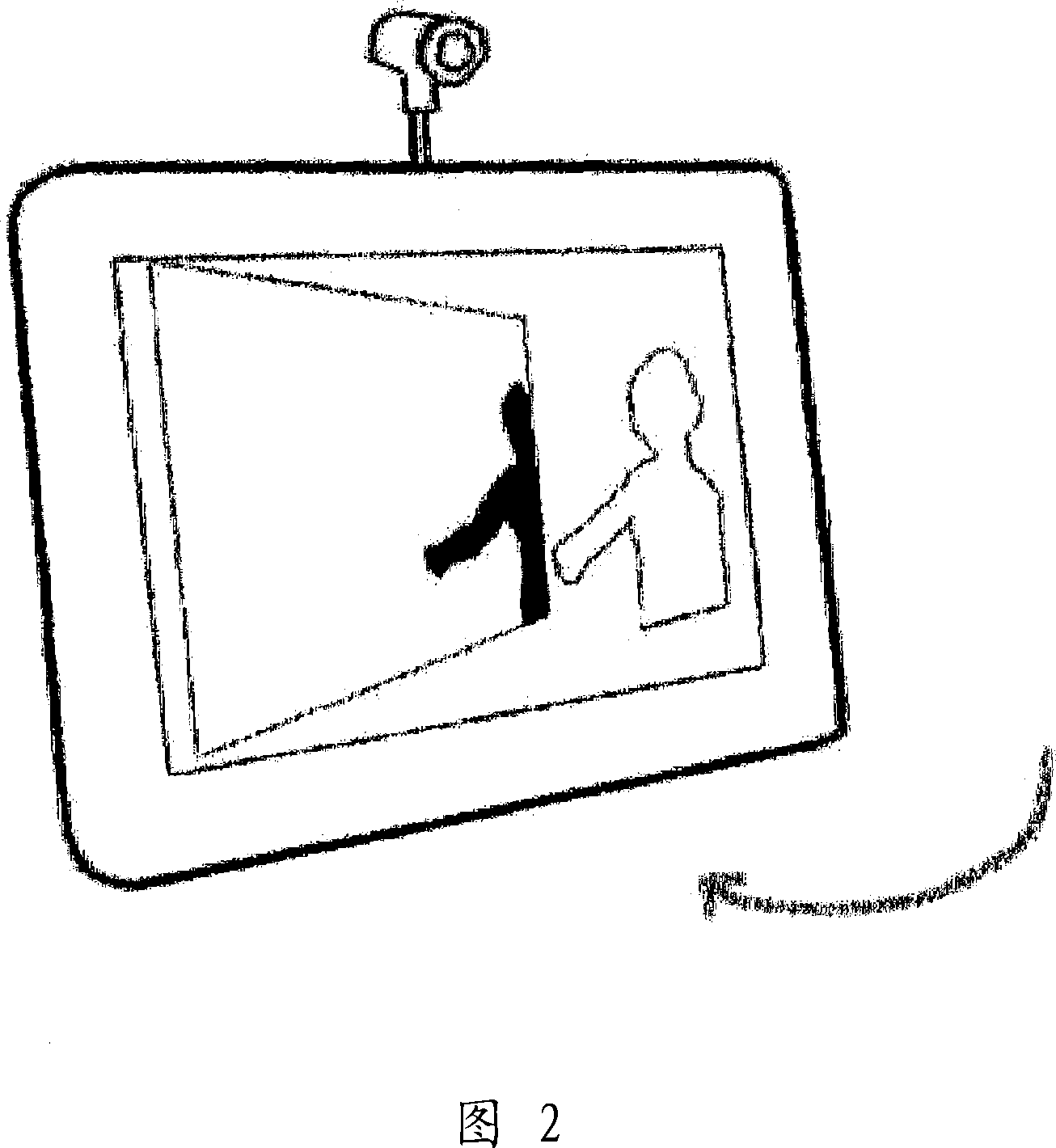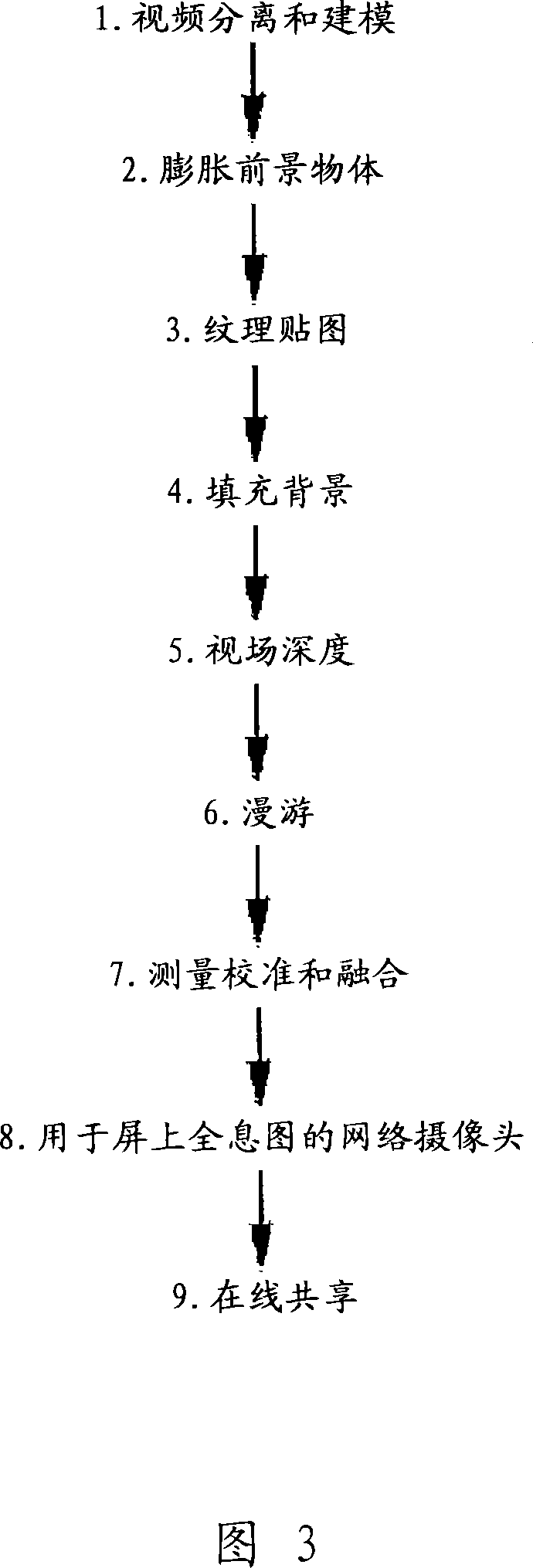Automatic scene modeling for the 3D camera and 3D video
A camera and automatic technology, applied in the field of image processing, can solve problems such as no system
- Summary
- Abstract
- Description
- Claims
- Application Information
AI Technical Summary
Problems solved by technology
Method used
Image
Examples
Embodiment Construction
[0043] If depth geometry is analyzed in image processing along with traditional features of painting and images such as color and contrast, a better visual experience can be produced in photos and videos. Unlike photographs, paintings or even murals where color points are represented on a two-dimensional image, the technology disclosed here deals with the structure of a 3D scene. It uses ordinary digital imaging equipment to perform this processing, whether it is a still camera or a video camera. The processing can be performed in the camera, but it usually occurs as the observer roams. This process occurs automatically without manual intervention. It can even work with old film films.
[0044] There are usually scene changes and camera movements that affect the 3D structure in the video. The entire optic flow can be used as an indicator of some kind of camera movement; for example, the rotation of the camera around the lens node will remove parallax and cause the 3D model to flat...
PUM
 Login to View More
Login to View More Abstract
Description
Claims
Application Information
 Login to View More
Login to View More - R&D
- Intellectual Property
- Life Sciences
- Materials
- Tech Scout
- Unparalleled Data Quality
- Higher Quality Content
- 60% Fewer Hallucinations
Browse by: Latest US Patents, China's latest patents, Technical Efficacy Thesaurus, Application Domain, Technology Topic, Popular Technical Reports.
© 2025 PatSnap. All rights reserved.Legal|Privacy policy|Modern Slavery Act Transparency Statement|Sitemap|About US| Contact US: help@patsnap.com



